We Analyzed 100+ Scalemail Reviews to See Its Worth in 2025
If you're here, you're probably doing what I did, searching for a real Scalemail review that tells you the truth.
Not the fluffy stuff from their homepage. Not the fake testimonials. Just one straight answer:
Is Scalemail actually worth it in 2025, or will it burn your inbox and budget?
I’ve been deep in the cold email world for a while now.
And I know how easy it is to get burned by the wrong email infrastructure tool.
So I took the time to read 100+ reviews, test the tool myself, and dig into what people are really saying about it.
This article is for you if:
- You’re tired of guessing what works and what doesn’t
- You want a full picture, pros, cons, pricing, and performance
- You’re trying to decide between Scalemail and tools like Mailforge, Mailreach, or Warmup Inbox
If you’ve been reading Scalemail reviews and still feel unsure, this blog will save you time, money, and a lot of deliverability headaches.
Let’s cut through the noise and get to the truth.
TL;DR – Is Scalemail Worth It in 2025?
- Scalemail is a referral-based tool to grow your email list, not a cold email platform.
- It’s great for newsletters and media brands that want a done-for-you referral system with branded dashboards.
- But it can’t send emails, doesn’t offer warm-up, and lacks visibility into deliverability or sender reputation.
- You’re also locked into a 3-month contract starting at $250/month, with no trial, no dashboard access, and no flexibility.
- It’s not a fit for cold outreach teams, small creators, or anyone who needs infrastructure control.
👉 If you need to actually send cold emails, warm up inboxes, and scale deliverability, you’re better off with a Scaledmail alternative like Mailforge.
What is Scalemail?
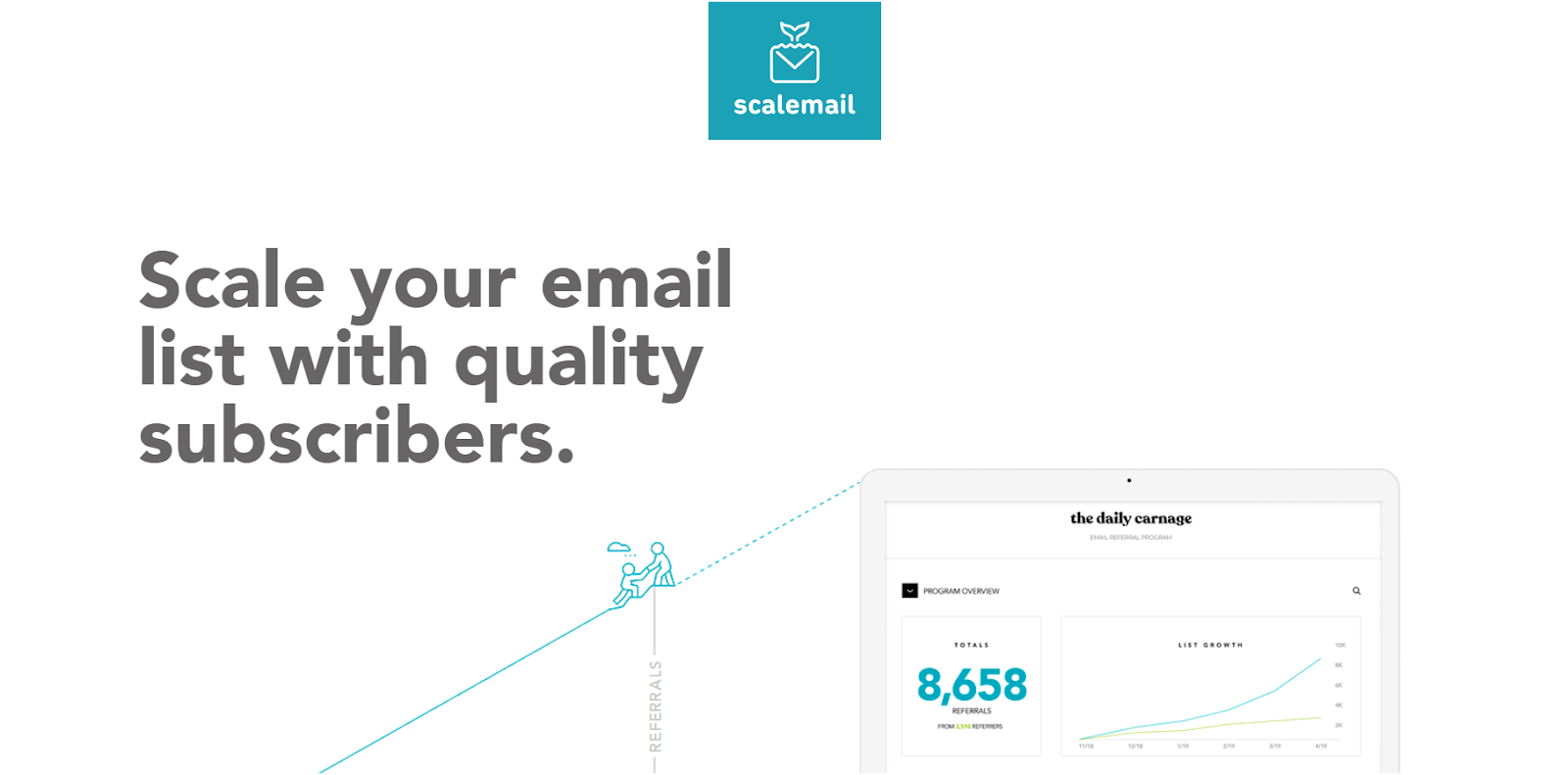
Scalemail is a referral-based email list growth tool.
It’s not for cold email, not for sending, not for inbox warm-up.
It does one job: help you grow your email list by turning your audience into promoters.
Here’s how it actually works:
- You contact their team
- You give them backend access
- Their developers plug Scalemail into your workflow
- They build you a custom-branded admin dashboard
- They also built a user-facing referral dashboard
- Now your existing subscribers can refer others → You get more signups
But here’s what actually makes Scalemail different: let’s break down the real features:
What features does Scalemail offer?
1. Referral System Focused Only on Email Acquisition
Most referral platforms try to do everything, including affiliate links, rewards, sales tracking, and app installs.
Scalemail skips all that.
It's purpose-built to drive email signups.
So everything in the tool is optimized for one outcome: grow your list.
2. Branded Admin & User Dashboards
Scalemail doesn’t give you a generic UI.
Their developers build two dashboards for you:
- Admin dashboard: For tracking referrals, managing users, and reviewing subscriber growth.
- User dashboard: For your audience to see their referral stats, grab their unique link, and share it.
Both dashboards are fully white-labeled with custom fonts, colors, and logos to match your brand.
No coding. No design work on your side.
Their team handles it all.
3. Done-For-You Integration (No DIY Setup)
You don’t sign up and start clicking buttons.
You reach out, and Scalemail’s team manually plugs the system into your existing workflow.
You give them access to your backend.
They install, customize, and launch the referral system for you.
No Zapier. No webhooks. No messing with APIs.
This is a developer-integrated solution, not a DIY SaaS tool.
Pros of Using Scalemail
If you're evaluating Scalemail for email list growth, here are the real benefits based on its core offering, user experience, and integration model.
Unlike generic referral tools, Scalemail is built specifically for email subscriber acquisition, making it a solid choice for newsletters, media companies, and publishers focused on growing high-quality lists.
1. Purpose-Built for Email List Growth
One of the biggest advantages of using Scalemail is its laser focus on email acquisition.
It’s not bloated with affiliate management, sales tracking, or unnecessary CRM features.
Everything in the platform is designed to help you increase email subscribers through referrals, which makes it more effective if list-building is your primary goal.
2. Developer-Led, Done-For-You Integration
Instead of a DIY setup, Scalemail offers full-service integration.
Their developers plug the system directly into your website or backend and build the referral flow to match your existing workflow.
This saves time, reduces complexity, and makes it easier for non-technical teams to launch faster.
3. Custom-Branded Dashboards for Admins and Users
Both the admin panel (used to monitor referrals) and the user-facing dashboard (used by subscribers to track their progress) are fully customized to your brand guidelines.
This gives your referral program a seamless, white-labeled feel, which increases trust and improves the user experience.
4. No Coding Required
Another key benefit of Scalemail is its no-code implementation.
You don’t need a developer on your team to set it up or manage it.
Their internal team handles dashboard builds, integrations, and logic, giving you more time to focus on content or growth strategy.
5. Trusted by Newsletter-Driven Brands
Scalemail is already used by high-volume newsletters and media companies like AFAR, The Daily Carnage, and The Scout.
If you run a similar operation, this adds credibility, proving the tool works at scale and is trusted by content-first teams.
Cons of Using Scalemail
Saclemail Cons
While Scalemail offers a streamlined solution for email list growth, it’s not a perfect fit for every team or use case.
Here are the most important drawbacks of using Scalemail, based on how the tool is built, how it’s delivered, and who it’s really meant for.
1. Not a Cold Email or Outreach Tool
Scalemail is not designed for cold email outreach, inbox warm-up, or sending campaigns.
There’s no email-sending infrastructure, no domain rotation, no deliverability reporting.
If you're looking for tools to run outbound sales campaigns, you'll need something like Mailforge or Mailreach instead.
2. No Self-Serve Dashboard or Trial Access
You can’t create an account and explore the platform on your own.
All setup is done manually by Scalemail’s internal developers, which means you don’t get direct access to test or configure the system before committing.
This limits transparency and flexibility, especially if you prefer hands-on tools.
3. 3-Month Minimum Commitment
Every plan comes with a mandatory three-month contract, with no month-to-month option or free trial.
This can be a barrier for early-stage newsletters or small teams testing referral growth for the first time.
4. Limited Use Case (Only Works for List Growth via Referrals)
If you’re not building an email list or you don’t plan to run a referral-based subscriber program, then Scalemail offers little to no value.
It’s hyper-specialized.
That’s great for focused use cases, but bad for teams that want a more flexible email marketing stack.
5. No Access to Deep Analytics or Performance Insights
Unlike traditional email platforms, Scalemail doesn’t give you detailed dashboards, deliverability metrics, or performance-based reporting.
You’re limited to basic referral tracking, which may not be enough if you want deeper insights into subscriber behavior or source attribution.
6. High Entry Price for Smaller Lists
At $250/month for up to 100K subscribers, Scalemail can feel expensive for early-stage operators with only a few thousand contacts.
There are no lower-tier plans or pricing options for smaller lists, so it’s not budget-friendly for everyone.
Who Should Use Scalemail (And Who Should Not)
Scalemail Pricing Breakdown (2025)
If you’re considering Scalemail, pricing is simple, but not cheap.
Instead of usage-based plans or feature tiers, Scalemail pricing is based entirely on your email list size.
There’s no free trial. No pay-as-you-go. And no monthly opt-out.
Every plan requires a 3-month minimum commitment, regardless of how many subscribers you have.
Here’s the full pricing breakdown:
📊 Scalemail Pricing Tiers (2025)
- 3-month minimum contract: No monthly cancel-anytime option
- No free trial or demo access: Setup requires direct onboarding with their team
- Pricing is fixed per tier: No feature limitations, just subscriber-based billing
- Does not include email sending or infrastructure tools: You’re paying for referral engine + dev support only
Scalemail Review Summary
Scalemail is a referral-based email list growth tool built for newsletters and media brands.
It helps you turn your audience into promoters using custom-branded dashboards and a fully managed setup.
You don’t have to touch any code; Scalemail’s team handles the integration for you.
But here’s the catch:
- You can’t send emails through Scalemail.
- No inbox warm-up, no analytics, no deliverability tools.
- You’re locked into a 3-month contract starting at $250/month, even if you’re early-stage.
- It’s not useful if you’re running cold outreach or want infrastructure control.
So, while Scalemail is solid for list-building via referrals, it quickly falls short for teams that want to actually engage that list with cold email or outbound campaigns.
If that’s your next step, you’ll need a proper cold email infrastructure tool that gives you full control over inbox warm-up, DNS setup, and scale.
Let’s check out the Scalemail alternatives.
Scalemail vs Other Email Infrastructure Tools
Let’s check the Scalemail alternatives:
#1Scalemail vs Mailforge

At first glance, Scalemail and Mailforge might seem unrelated.
One focuses on growing your email list.
The other handles the infrastructure behind sending cold emails.
But if you're building a list with the intention to engage, nurture, or run outbound, choosing the wrong tool early on can slow you down later.
So yes,
Mailforge is a legitimate alternative to Scalemail, especially if your goal goes beyond list collection and into actual email activity.
How is Mailforge a Scalemail Alternative?
Scalemail is a done-for-you referral system.
You hand over access, and their team builds a branded user dashboard that rewards subscribers for referring others.
That’s the product.
There’s no dashboard for you to control.
You can’t send emails.
You don’t get warm-up, inbox rotation, or deliverability insights.
It’s great if you just want passive list growth. But once the list is built, then what?
And here Mailforge becomes more relevant.
Mailforge gives you full control of your email infrastructure. You can:
- Spin up domains
- Configure inboxes (without touching DNS records)
How to Test SPF, DKIM, and DMARC Records
- Warm them up automatically
- Track performance
- Integrate with your outreach tool of choice
Everything is modular: you add inboxes, warm them, replace them when they burn out, and manage it all in one dashboard.
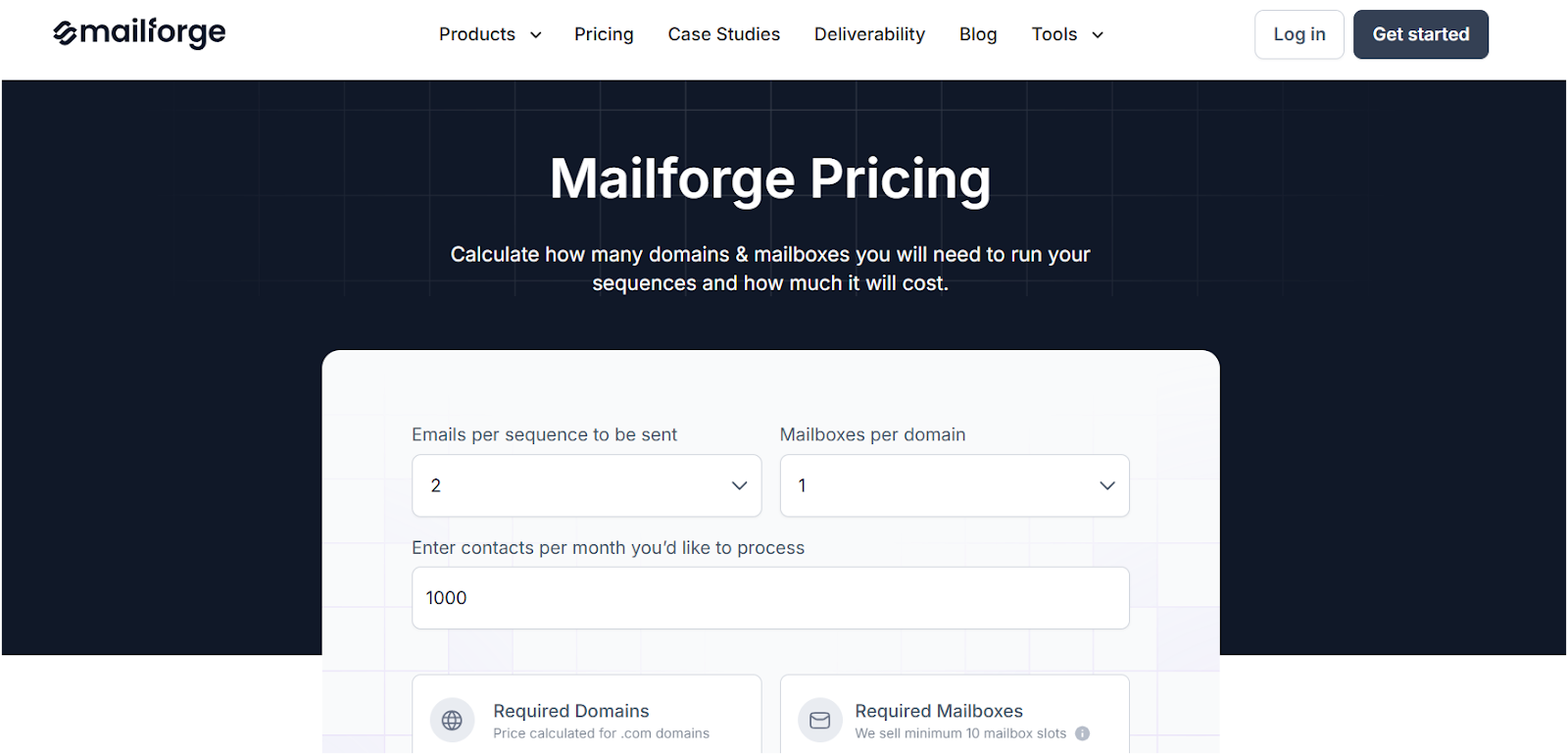
No back-and-forth with developers. No three-month lock-in. You’re up and running in 10 minutes.
So in short,
- With Scalemail, you get branded referral growth, but no control and no infrastructure.
- With Mailforge, you lose the referral engine but gain complete control over how emails are sent, warmed, and scaled.
If you’re a newsletter trying to grow subscribers through a viral loop and don’t plan to send cold emails at all, Scalemail makes sense.
But if you’re planning to email that list, run outreach campaigns, or even build cold email capacity from scratch, Mailforge fills in every gap Scalemail leaves open.
#2 Scalemail Vs Mailreach
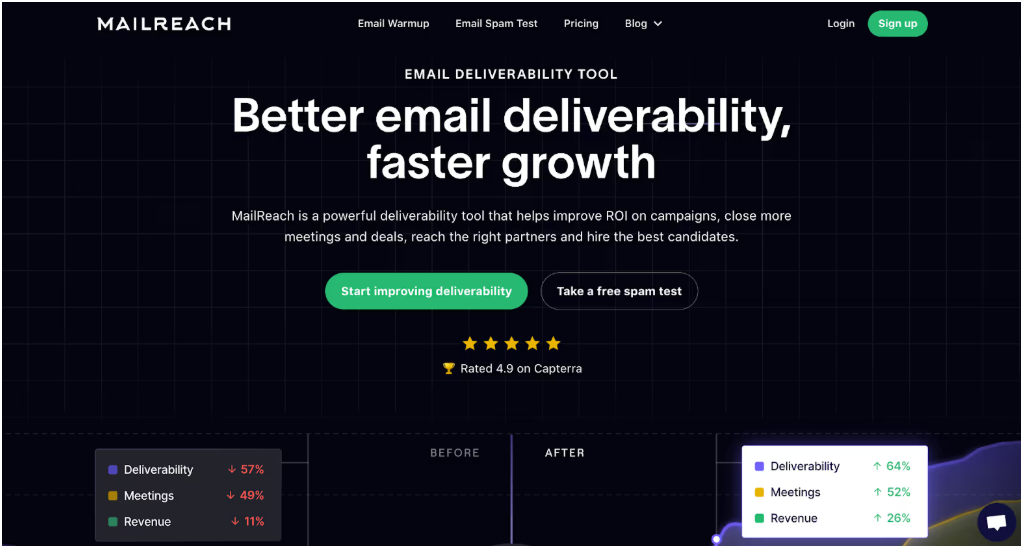
If you’re comparing Scalemail and Mailreach, the key difference is timing.
Mailreach steps in after your infrastructure is set. It’s all about warming inboxes, reducing spam placement, and keeping your sender reputation clean.
You don’t use Mailreach to build a list.
You use it to make sure the emails you send from that list actually reach real people.
With Mailreach, you can:
- Run automated warm-up for Gmail, Outlook, or custom inboxes
- View detailed analytics on inbox/spam rates
- Identify DNS or setup issues via spam testing
- Gradually scale volume without damaging reputation
It’s best suited for outreach teams, cold emailers, and senders scaling multiple mailboxes.
The UI is polished, the reporting is helpful, and the integrations are flexible.
But it comes with limitations:
- No sending functionality — you’ll still need another tool to send campaigns
- No list-building or acquisition tools
- $20/mailbox/month pricing can add up fast as you scale
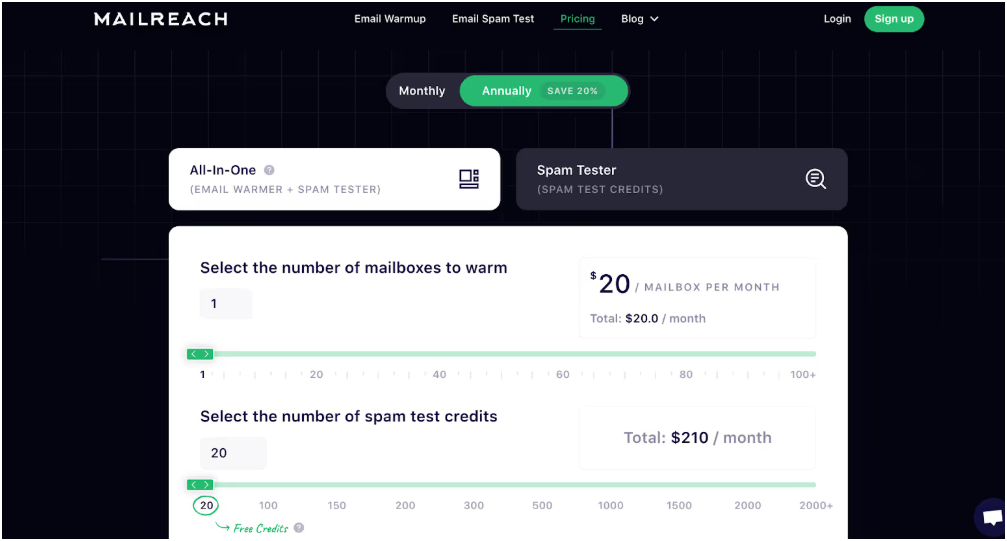
Compared to Scalemail, Mailreach gives you more control, but it’s focused entirely on deliverability, not acquisition or branding.
There’s no onboarding team doing setup for you; you run it yourself.
If your biggest problem right now is making sure emails land in inboxes, not collecting more subscribers, Mailreach fills that gap, but Scalemail doesn’t.
5 MailReach Alternatives For Optimal Email Deliverability (2025)
#3 Scalemail Vs Inframail
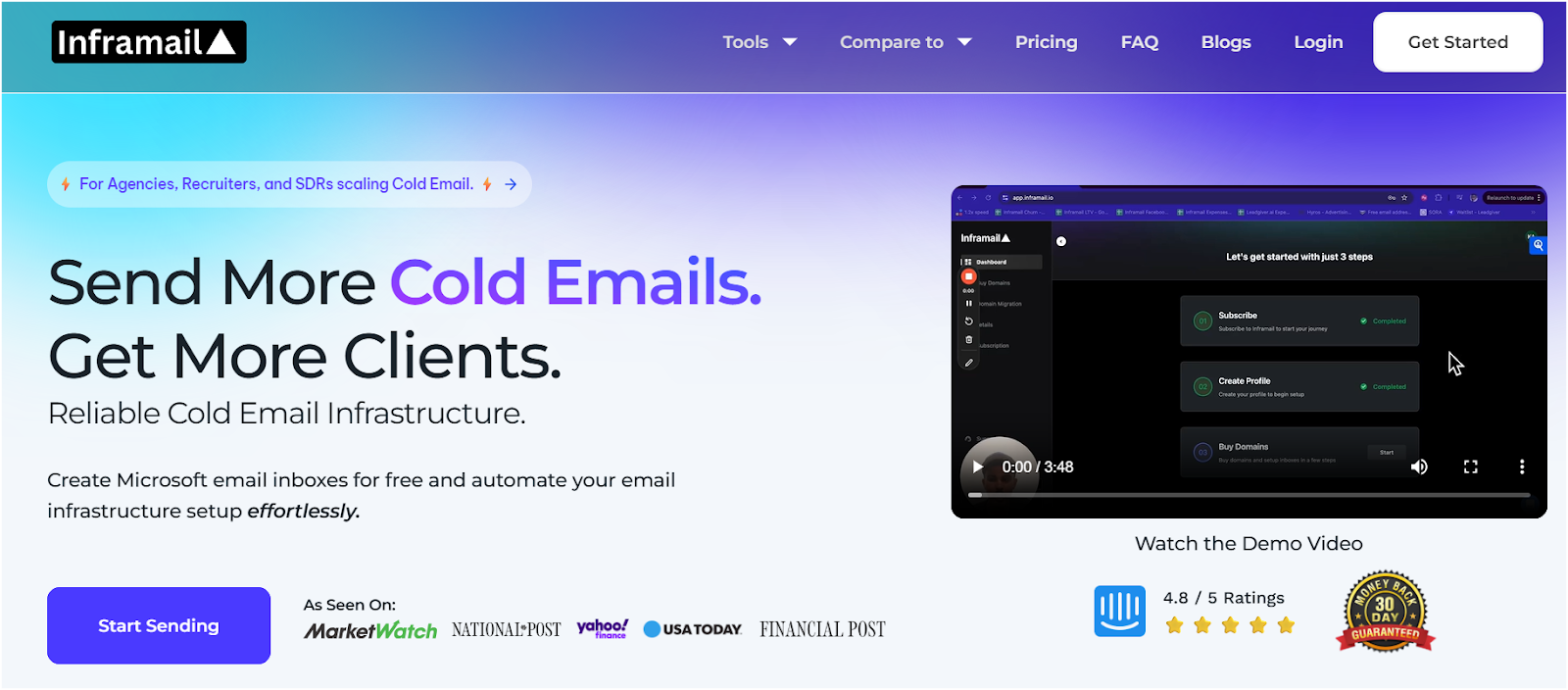
Inframail looks like a strong infrastructure play, especially if you’re just getting started with cold outreach and want a low-cost, Microsoft-based setup with unlimited inboxes and dedicated IPs.
But the keyword here is Microsoft-only.
If you’re planning to run cold campaigns using Gmail or want full DNS control, Inframail won’t get you far.
Compared to Scalemail, the contrast is clear:
- Inframail gives you the ability to send emails at scale
- Scalemail helps you build a list you can send to
Scalemail is hands-off and focused solely on list growth through referrals.
You’re not touching infrastructure or managing domains.
Inframail is the opposite: you’re spinning up inboxes, assigning domains, and monitoring deliverability (sort of).
Where Inframail wins:
- Unlimited inboxes under a flat rate ($99/month)

- Dedicated IPs included, even on the base plan
- Built-in warm-up, DNS setup, blacklist monitoring, and redirect masking
- Works with tools like Smartlead and Instantly via export-ready accounts
But it falls short when:
- You need Gmail support (Inframail is Microsoft-only)
- You want clean IP separation — warm-up happens on shared pools
- You send more than 10,000+ emails/day — infrastructure tends to collapse
- You want visibility and control — no APIs, limited domain-level customization
In comparison,
Scalemail doesn’t pretend to solve deliverability.
It doesn’t offer any sending capability or infrastructure.
But it’s stable in what it does: build a branded referral engine and grow your email list.
If your goal is high-volume cold email outreach, Scalemail won’t help, but neither will Inframail if you're scaling fast or need precision.
Scalemail is best for content-driven teams.
Inframail is fine for small Microsoft-based outreach teams.
But if you want real control over both scale and deliverability, neither tool fully covers you.
Conclusion: Should You Use Scalemail?
Here’s the short answer:
Scalemail works well if you only want to grow your email list through referrals.
It’s simple, branded, and fully handled by their team. No setup, no code, no fuss.
But that’s where it stops.
If you need to send cold emails, warm up inboxes, or monitor deliverability, Scalemail won’t help.
It doesn’t give you sending tools, warm-up support, or visibility into what happens after you collect those emails.
That’s why many teams eventually look for something more complete.
👉 If you want full control over your cold email setup, from domains to warm-up to inbox scaling.
Mailforge is the better choice.
You get everything Scalemail skips, in one dashboard, with zero DNS hassle.
Simple as that.